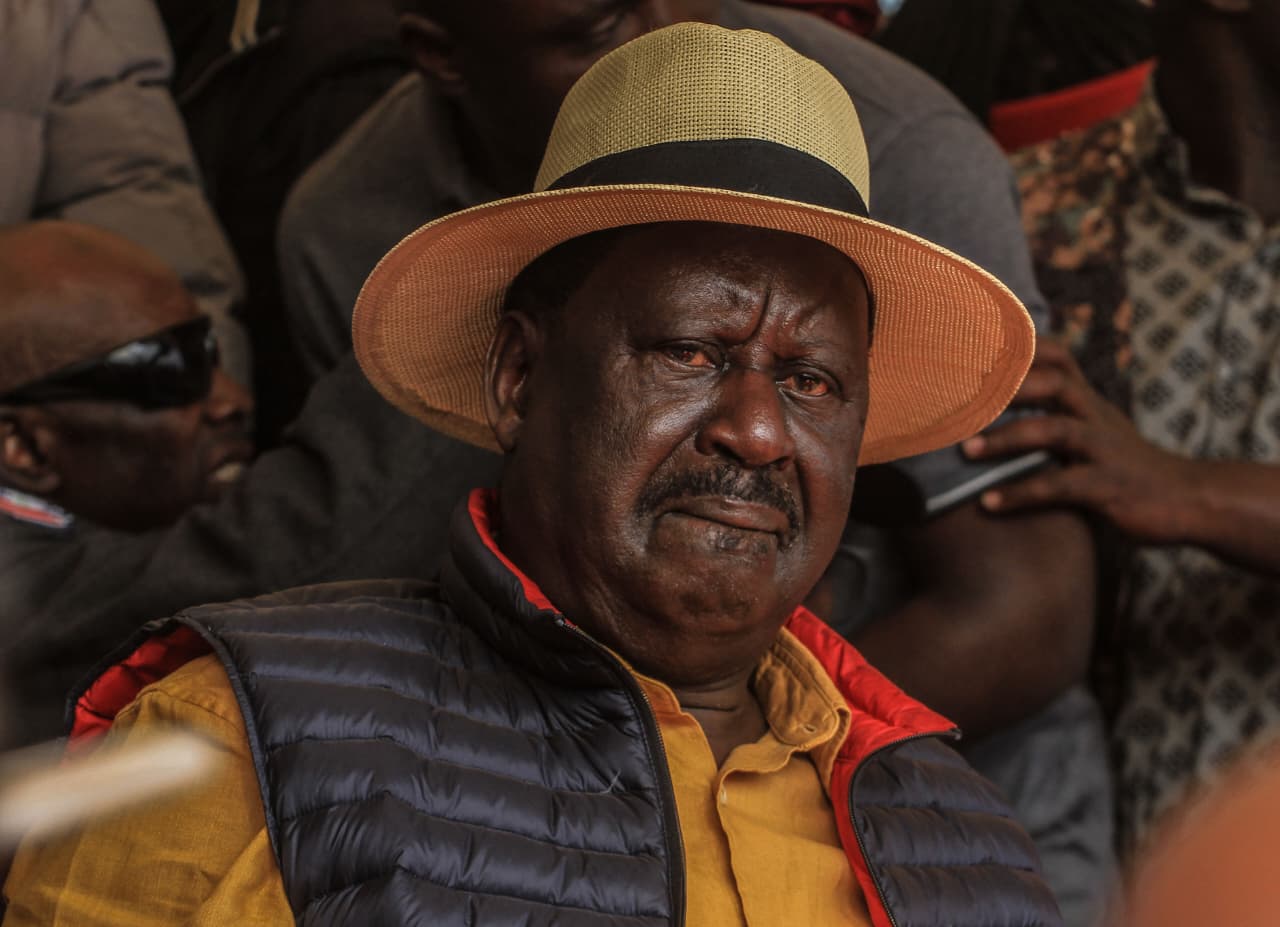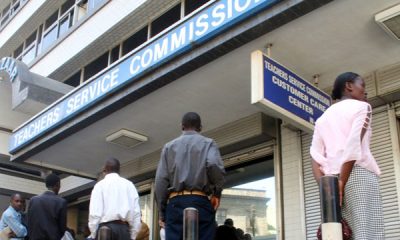News
Understanding the Cardiac Arrest That Reportedly Caused Raila’s Death
When cardiac arrest occurs, time becomes the enemy.

NAIROBI— The sudden death of veteran Kenyan politician Raila Odinga from cardiac arrest in India has thrust into sharp focus a medical emergency that claims thousands of lives globally each year, often with little warning and devastating speed.
Odinga, 80, collapsed and died Wednesday morning at a health facility in Koothattukulam, Kerala, where he had travelled to receive Ayurvedic treatment. Local police and hospital officials confirmed that cardiac arrest was the cause of death, marking a tragic end to one of Kenya’s most storied political careers.
But what exactly is cardiac arrest, and why does it prove fatal so quickly?
Medical experts describe cardiac arrest as a catastrophic failure of the heart’s electrical system.
Unlike a heart attack, which occurs when blood flow to the heart muscle is blocked, cardiac arrest involves the heart suddenly ceasing to beat effectively.
Within seconds, blood flow to the brain and other vital organs stops. Without immediate intervention, death follows within minutes.
Dr Margaret Mwangi, a consultant cardiologist at Nairobi Hospital, explains that cardiac arrest is often the culmination of years of underlying heart disease rather than a bolt from the blue.
“Most people who suffer cardiac arrest have had silent coronary artery disease, chronic irregular heartbeats, or poorly controlled high blood pressure for years,” she says. “The heart may have been struggling long before that final moment when it simply stops.”
The World Health Organisation identifies several key risk factors that make individuals vulnerable. Coronary artery disease tops the list, followed by previous heart attacks, heart failure, and arrhythmias.
But lifestyle factors play an equally important role: hypertension, diabetes, smoking, obesity, excessive alcohol consumption, and physical inactivity all contribute to weakening the heart over time.
Family history, too, casts a long shadow over those with relatives who have suffered heart conditions.
Warning signs, though often subtle, can appear in the hours, days, or even weeks before cardiac arrest strikes.
Chest pain, breathlessness, heart palpitations, dizziness, and fainting spells may signal an impending crisis.
Yet many victims experience no symptoms at all before suddenly collapsing.
When cardiac arrest occurs, time becomes the enemy.
The victim loses consciousness immediately, stops breathing or breathes abnormally, and has no detectable pulse.
Brain damage begins within four to six minutes without oxygen. After ten minutes, survival becomes increasingly unlikely.
Survival hinges on immediate action.
Cardiopulmonary resuscitation, or CPR, performed by bystanders can double or triple survival rates by manually pumping blood to vital organs.
An automated external defibrillator, increasingly found in public spaces, can deliver an electric shock to restart the heart’s normal rhythm.
Emergency medical services must be summoned without delay.
For those who survive, long-term management becomes paramount.
Treatment varies depending on the underlying cause but typically includes medications to control heart rhythm and blood pressure, significant lifestyle modifications, and sometimes surgical interventions. Implantable cardioverter-defibrillators, small devices that monitor heart rhythm and deliver corrective shocks when needed, have saved countless lives. In severe cases, coronary artery bypass surgery may be necessary to restore blood flow to the heart muscle.
Odinga’s decision to seek Ayurvedic treatment in India reflects a growing global interest in traditional medicine systems. Ayurveda, practised in India for more than three millennia, takes a holistic approach to health, seeking to balance the body’s energies through personalised treatments. These include herbal remedies, therapeutic oil massages, detoxification procedures known as Panchakarma, dietary modifications, yoga, and meditation.
The World Health Organisation recognises Ayurveda as a traditional medicine system, and many patients report benefits from complementary Ayurvedic therapies alongside conventional medical care. However, medical experts caution that rigorous scientific validation remains limited for many Ayurvedic treatments. Safety concerns also exist regarding unregulated herbal supplements, some of which have been found to contain heavy metals or interact dangerously with prescription medications.
Dr Samuel Omondi, a public health physician at Kenyatta National Hospital, emphasises the importance of integrated care for serious conditions. “Traditional medicine can play a valuable supportive role in wellness and chronic disease management,” he notes. “But life-threatening conditions like heart disease require evidence-based medical interventions. Patients should always inform their doctors about any alternative treatments they’re pursuing.”
Odinga’s health had been a subject of public interest for years. Like many in his age group, he managed chronic health conditions that naturally increase cardiovascular risk. His medical journeys, both within Kenya and abroad, occasionally made headlines, reflecting his willingness to explore both conventional and alternative therapeutic approaches.
Yet he remained remarkably active in political life, defying the physical toll of decades in Kenya’s often bruising political arena. His stamina on the campaign trail and his continued engagement in public affairs belied the health challenges he faced privately.
The tragedy of cardiac arrest lies not just in its lethality but in its often preventable nature. Cardiologists stress that many cases could be avoided through early detection and management of risk factors. Regular health screenings, particularly for those over 40 or with family histories of heart disease, can identify problems before they become critical.
“We have excellent tools to prevent cardiac arrest,” Dr Mwangi says. “Blood pressure control, cholesterol management, diabetes treatment, smoking cessation, regular exercise, and a heart-healthy diet can dramatically reduce risk. The challenge is getting people to take these steps seriously before a crisis occurs.”
As Kenya mourns the loss of Raila Odinga, his death serves as a stark reminder that heart disease respects neither political stature nor public prominence. In an era when medical science offers unprecedented tools to prevent and treat cardiovascular disease, awareness and timely intervention remain our most powerful weapons against the silent epidemic that continues to claim lives across the globe.
Kenya Insights allows guest blogging, if you want to be published on Kenya’s most authoritative and accurate blog, have an expose, news TIPS, story angles, human interest stories, drop us an email on [email protected] or via Telegram
-

 News2 weeks ago
News2 weeks agoKenyan Driver Hospitalized After Dubai Assault for Rejecting Gay Advances, Passport Seized as Authorities Remain Silent
-

 Investigations1 week ago
Investigations1 week agoMoney Bior, Lawyer Stephen Ndeda Among 18 Accused Of Running An International Fraud Ring Involved With Scamming American Investor Sh500 Million
-

 Investigations6 days ago
Investigations6 days agoNestlé Accused of Risking Babies’ Health in Africa with ‘Toxic’ Cerelac Product Sold Highest in Kenya
-

 Business2 weeks ago
Business2 weeks agoConstruction Of Stalled Yaya Center Block Resumes After More Than 3 Decades and The Concrete Story Behind It
-

 Investigations2 weeks ago
Investigations2 weeks agoHow Somali Money From Minnesota Fraud Ended In Funding Nairobi Real Estate Boom, Al Shabaab Attracting Trump’s Wrath
-

 News1 week ago
News1 week agoTSC Announces Major Policy Shift To End Transfer Of Promoted Teachers
-

 News5 days ago
News5 days ago48-Year-Old Woman Who Pushed 25-Year-Old Boyfriend To Death From 14th Floor Kilimani Apartment Arrested
-

 Investigations2 days ago
Investigations2 days agoHow Land Grabbing Cartels Have Captured Ardhi House














